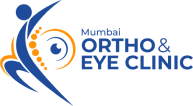General orthopedics

General orthopedics is the area of medicine focused on the treatment of various orthopedic conditions and helps people dealing with a range of issues such as joints, bones, or soft tissues, such as cartilage, muscles, ligaments, and tendons.

Related Services
Book an Appointment
Conditions
- Arthritis
- Bursitis
- Cartilage injuries of limb
- Muscle and ligament sprains, strains, and tears of the upper and lower extremities
- Osteoarthritis
- Traumatic arthritis
Treatment
- Arthroscopic surgery of the upper and lower extremities
- Imaging
- Injections
- Joint replacement
- Nerve decompression surgery of the upper and lower extremities
Common Orthopaedic Conditions
Arthritis
Arthritis is a problem related to joint inflammation, but the term describes around 200 conditions that affect joints and connective tissue. It is a rheumatic condition. Rheumatic conditions tend to involve pain, aching, stiffness, and swelling in and around one or more joints. The symptoms can develop gradually or suddenly. Certain rheumatic conditions can also involve the body’s immune system and internal organs.
Symptoms
The most common symptoms of arthritis may include:
- Pain
- Swelling
- Redness
- Stiffness
- Decreased range of motion
Treatment
Lifestyle modifications:
- Weight management: Being overweight can contribute to arthritis pain. Hence gradual weight loss can help in reducing the complications of arthritis.
- Quit smoking.
- Exercise-trained exercise can help decrease your pain and stiffness and improve your range of motion.
- Good posture: A physiotherapist will guide and instruct you on how to correctly sit, stand and move, which will help ease your pain.
Activities those needs to be avoided :
- Running
- Jumping
- High-impact aerobics
Medications:
- Nonsteroidal anti-inflammatory drugs (NSAIDs)
- Corticosteroid medications, such as prednisone
- Disease-modifying antirheumatic drugs (DMARDs)
Consult your doctor if over-the-counter medications don’t relieve your pain.
Osteoarthritis
It is the most common form of arthritis, affecting lakhs of people worldwide. It usually occurs when the protective cartilage that cushions the ends of the bones wears down over time.
Symptoms
Some common symptoms of osteoarthritis include:
- Pain
- Stiffness
- Tenderness
- Loss of flexibility
- Grating sensation
- Bone spurs
- Swelling
Treatment
- Medications
- Therapy
- Cortisone injections.
- Joint replacement
Traumatic arthritis
Post-traumatic arthritis is inflammation in the joints that form after trauma. It develops quickly after an injury instead of over years of wear and tear like other forms of arthritis.
It’s usually a temporary issue; many recovers in a few months. But, sometimes, post-traumatic arthritis lasts longer and becomes a chronic (long-term) condition.
Symptoms
- Pain.
- Swelling.
- Stiffness.
- Tenderness or sensitivity to touch.
Treatment/ surgries
- Joint repair. Joint surfaces can sometimes be smoothed or realigned to reduce pain and improve function. These procedures can be performed arthroscopically.
- Joint replacement. It is the procedure in which damaged joints are removed and replaced with an artificial ones. It is most common in the hips and knees.
- Joint fusion. This procedure is often used for smaller joints, like the wrist, ankle, and fingers. It removes the ends of the bones in the joint and then locks those ends until they heal into one rigid unit.
Muscle and ligament sprains
- A sprain is a tear in ligaments. Ligaments are fibrous tissues that connect bones to other bones at joints.
- A strain is a stretch or tear, but it happens in a muscle or a tendon. Tendons link muscles to the bones.
Symptoms
Signs and symptoms vary, depending on the severity of your injury, and may include:
- Swelling
- Pain
- Bruising
- Limited ability to move

Treatment
- Rest: Don't put any pressure on the injured area for 1-2 days. This includes not lifting.
- Ice: Put a bag of ice for 10-15 minutes at a time, take it off for at least 30 minutes, and repeat it over the first three days.
- Compression: You can wrap an injured ankle, wrist, knee, or elbow in a bandage or buy a compression sleeve.
- Elevation: Lie down, place the injured area on a pillow, and raise it above the level of your heart.
If you are feeling any of the symptoms, you should see your doctor without fail. Dr. Ganesh Rajeshwar is a reputed orthopedic surgeon in Mumbai, so if you are looking for consultation or surgery, feel free to contact us and book an appointment.

